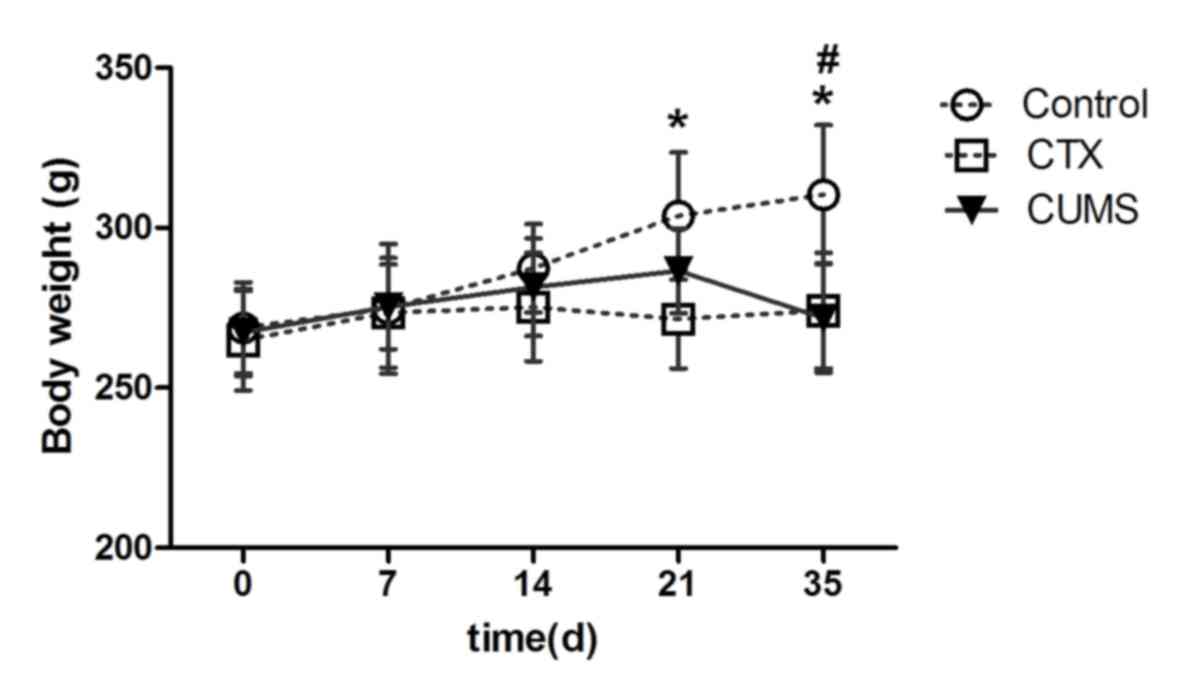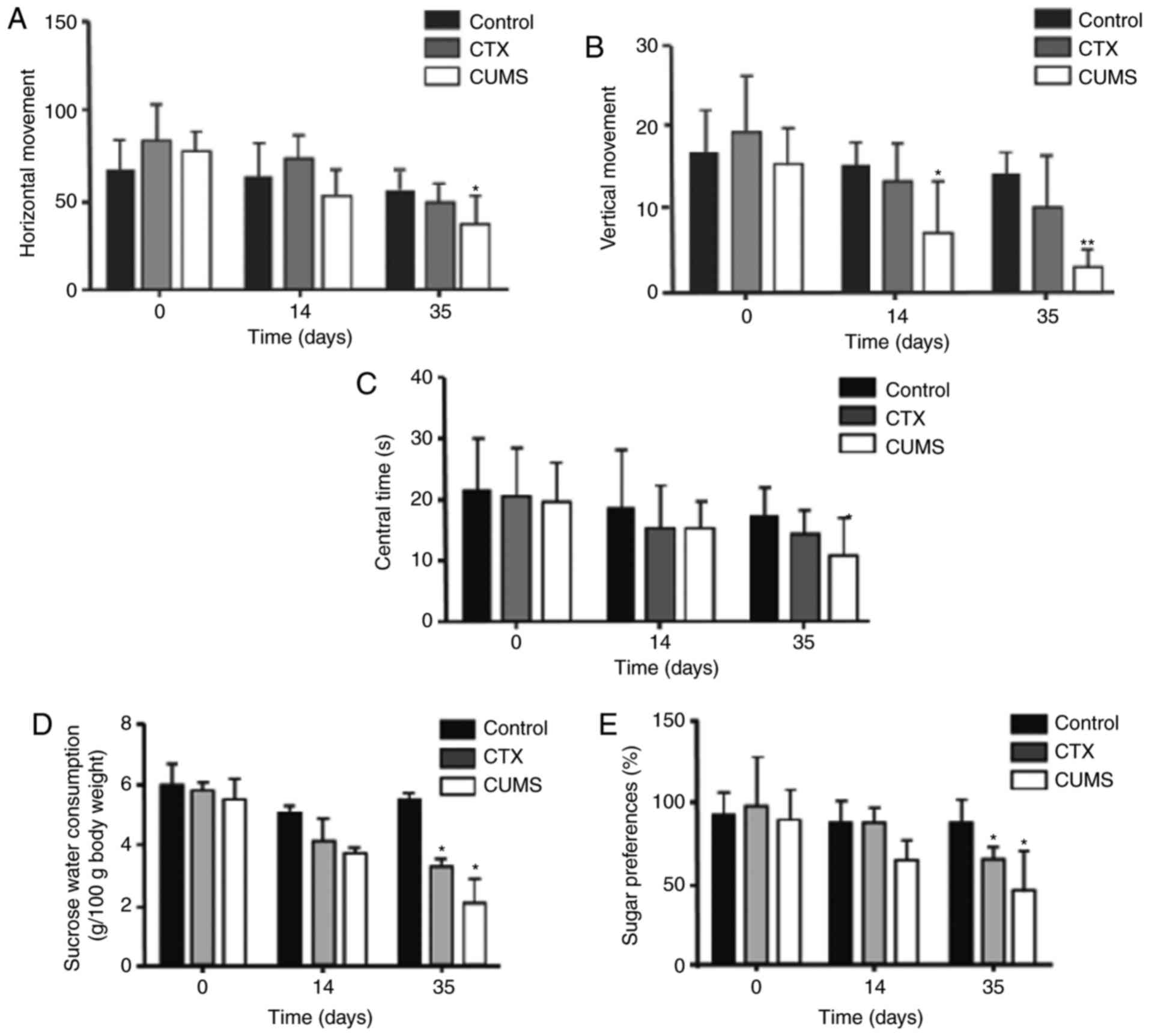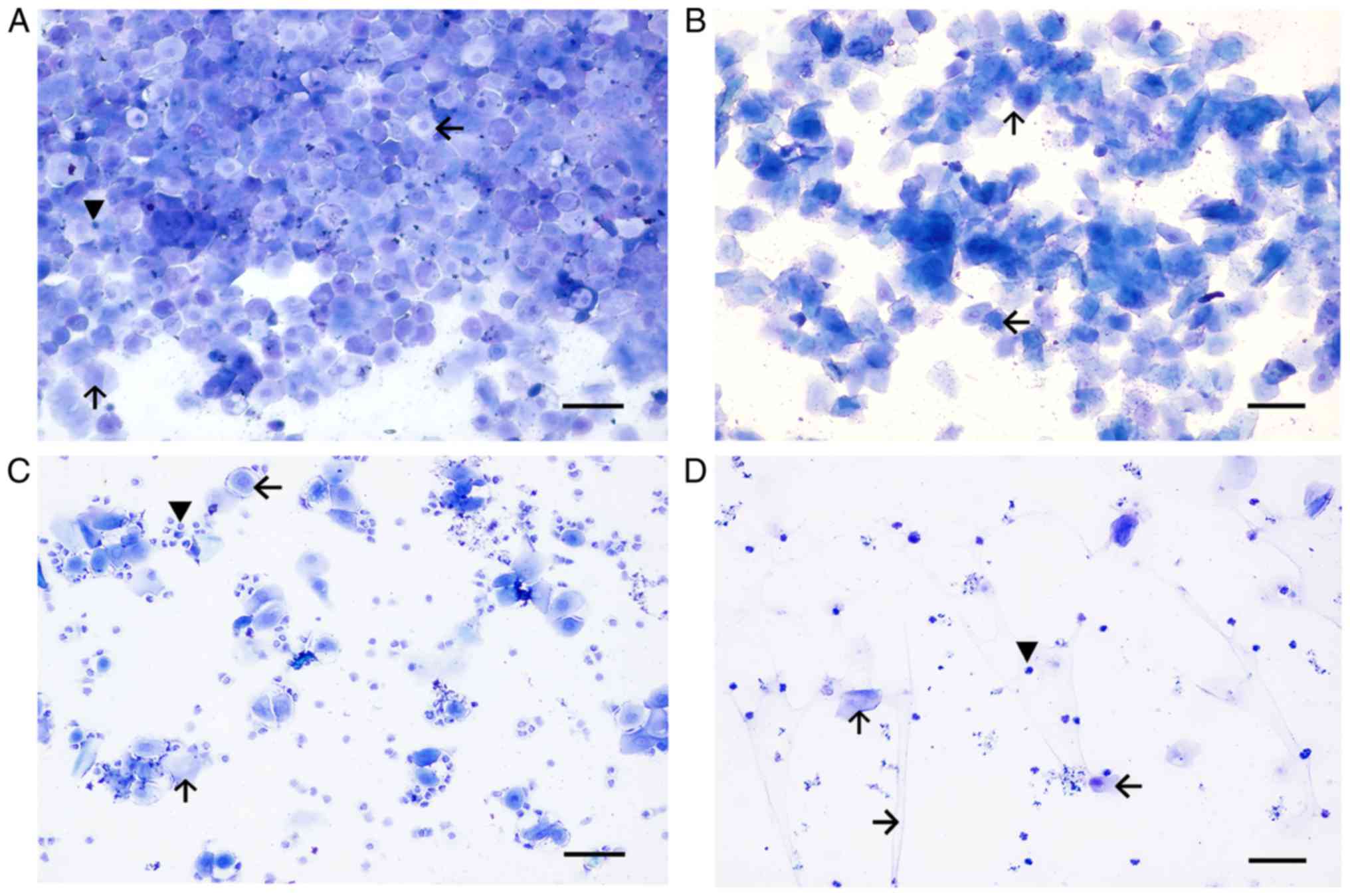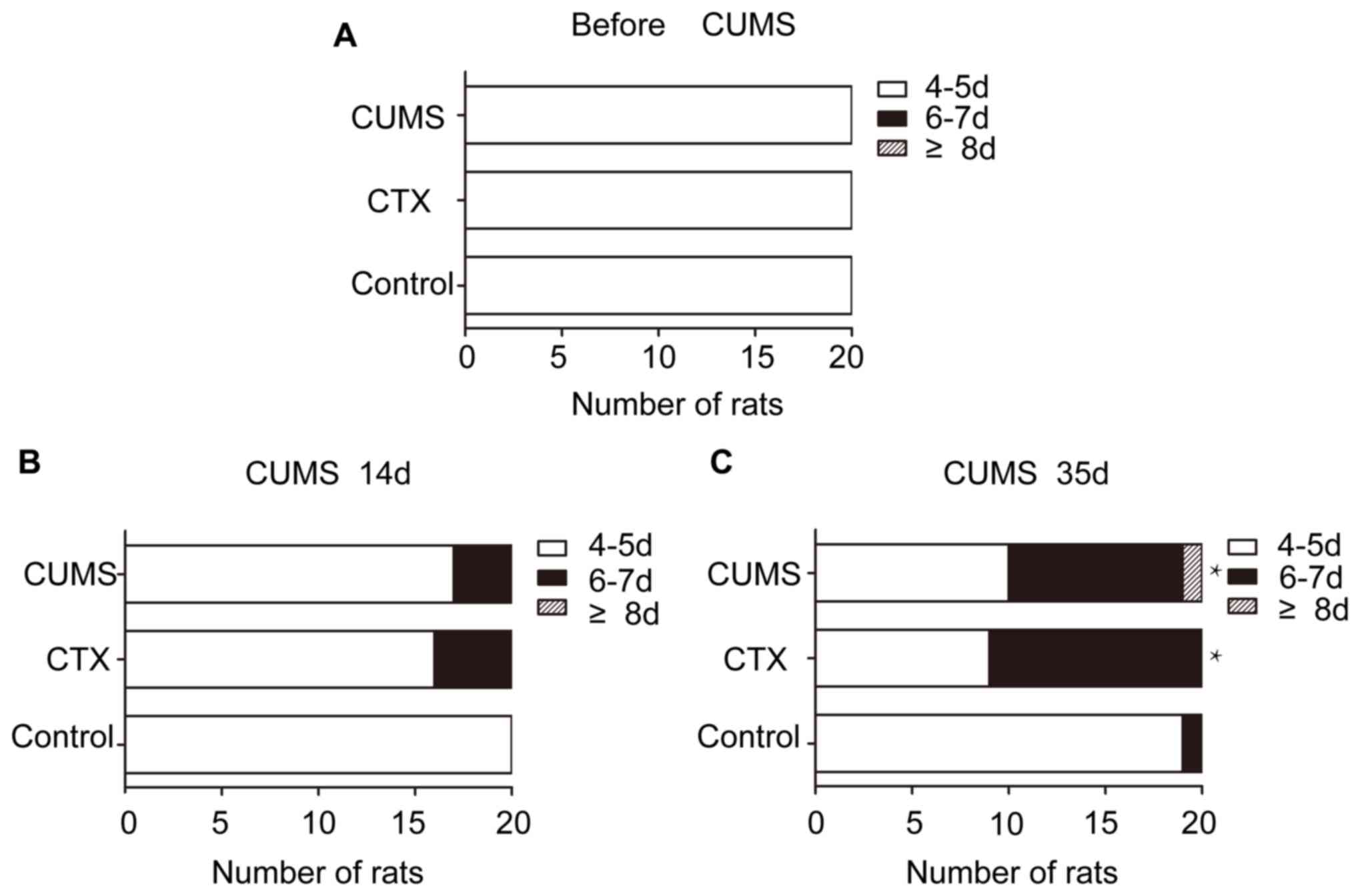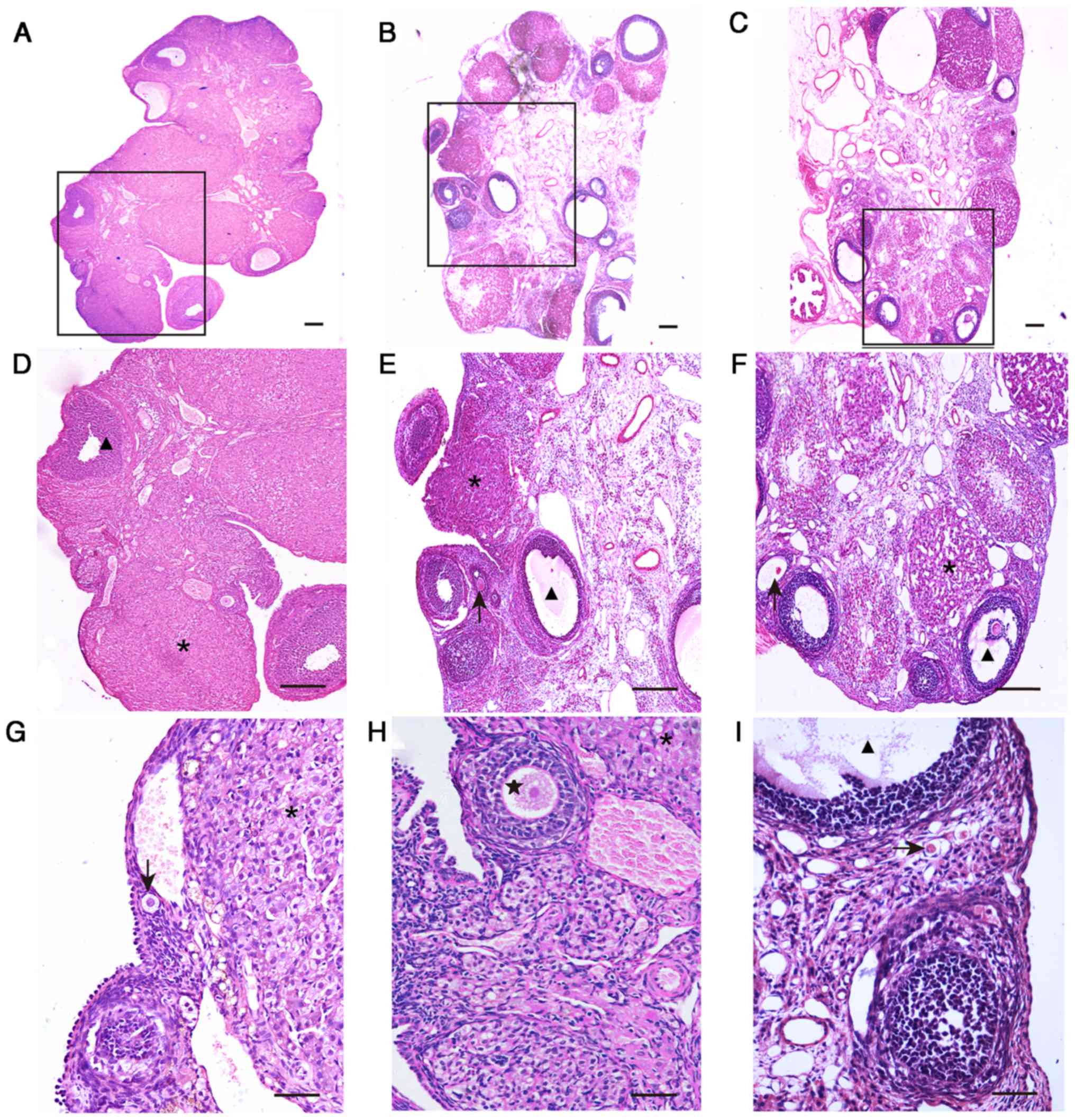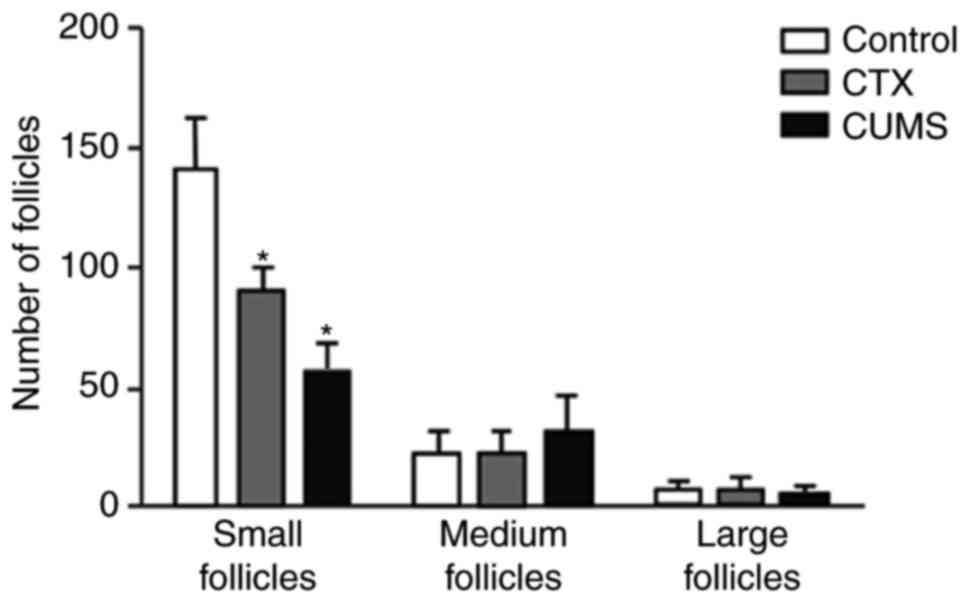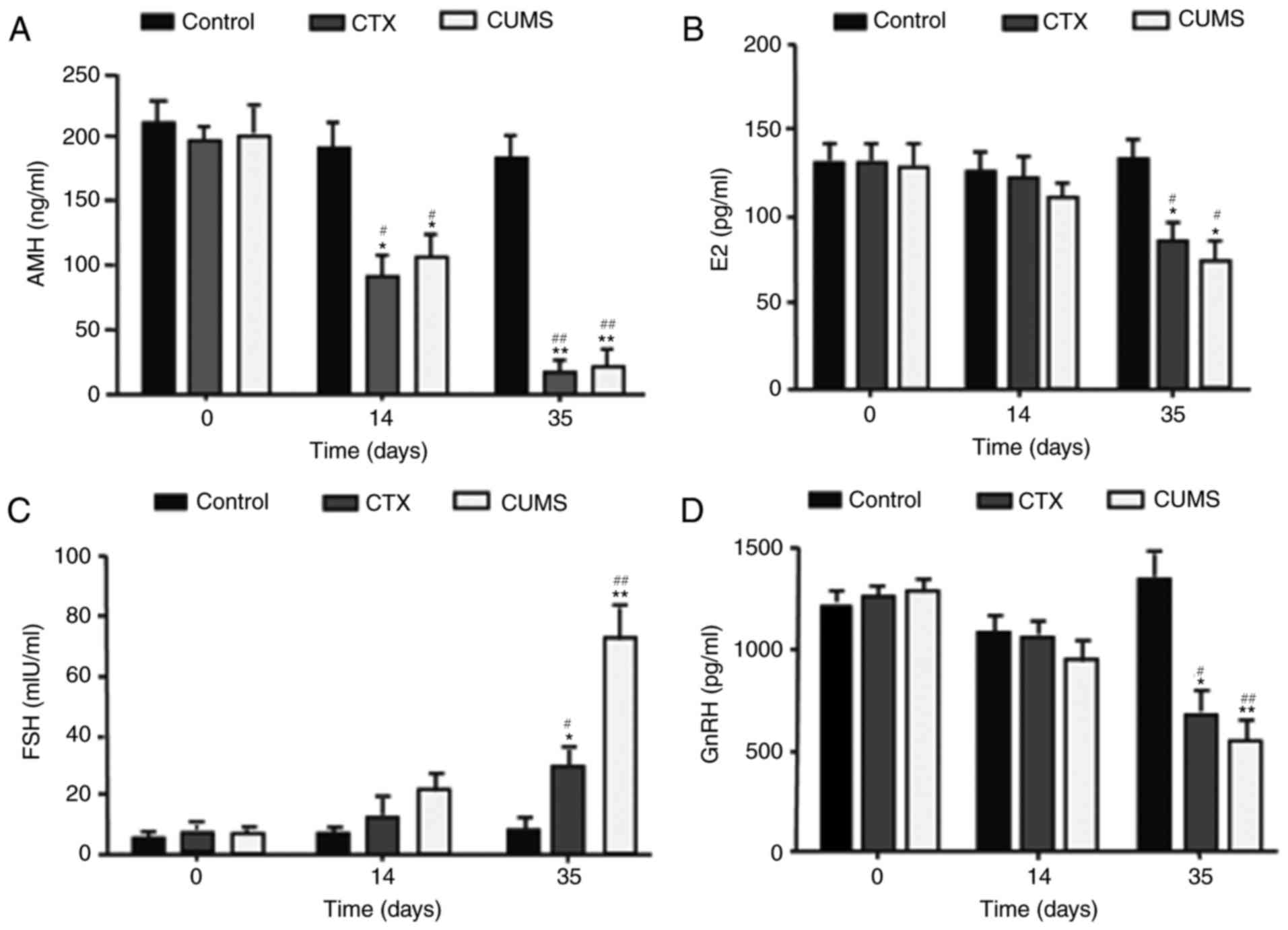|
1
|
Shelling AN: Premature ovarian failure.
Reproduction. 140:633–641. 2010. View Article : Google Scholar : PubMed/NCBI
|
|
2
|
Shuster LT, Rhodes DJ, Gostout BS,
Grossardt BR and Rocca WA: Premature menopause or early menopause:
long-term health consequences. Maturitas. 65:161–166. 2010.
View Article : Google Scholar : PubMed/NCBI
|
|
3
|
Tseng LA, El Khoudary SR, Young EA, Farhat
GN, Sowers M, Sutton-Tyrrell K and Newman AB: The association of
menopause status with physical function: The Study of Women's
Health Across the Nation. Menopause. 19:1186–1192. 2012. View Article : Google Scholar : PubMed/NCBI
|
|
4
|
Allshouse AA, Semple AL and Santoro NF:
Evidence for prolonged and unique amenorrhea-related symptoms in
women with premature ovarian failure/primary ovarian insufficiency.
Menopause. 22:166–174. 2015. View Article : Google Scholar : PubMed/NCBI
|
|
5
|
Barra R, Cruz G, Mayerhofer A, Paredes A
and Lara HE: Maternal sympathetic stress impairs follicular
development and puberty of the offspring. Reproduction.
148:137–145. 2014. View Article : Google Scholar : PubMed/NCBI
|
|
6
|
Dorfman M, Arancibia S, Fiedler JL and
Lara HE: Chronic intermittent cold stress activates ovarian
sympathetic nerves and modifies ovarian follicular development in
the rat. Biol Reprod. 68:2038–2043. 2003. View Article : Google Scholar : PubMed/NCBI
|
|
7
|
Liu TE, Wang S, Zhang L, Guo L, Yu Z, Chen
C and Zheng J: Growth hormone treatment of premature ovarian
failure in a mouse model via stimulation of the Notch-1 signaling
pathway. Exp Ther Med. 12:215–221. 2016. View Article : Google Scholar : PubMed/NCBI
|
|
8
|
Li J, Fan S, Han D, Xie J, Kuang H and Ge
P: Microarray gene expression profiling and bioinformatics analysis
of premature ovarian failure in a rat model. Exp Mol Pathol.
97:535–541. 2014. View Article : Google Scholar : PubMed/NCBI
|
|
9
|
Willner P, Towell A, Sampson D,
Sophokleous S and Muscat R: Reduction of sucrose preference by
chronic unpredictable mild stress, and its restoration by a
tricyclic antidepressant. Psychopharmacology (Berl). 93:358–364.
1987. View Article : Google Scholar : PubMed/NCBI
|
|
10
|
Sun M, Wang S, Li Y, Yu L, Gu F, Wang C
and Yao Y: Adipose-derived stem cells improved mouse ovary function
after chemotherapy-induced ovary failure. Stem Cell Res Ther.
4:802013. View
Article : Google Scholar : PubMed/NCBI
|
|
11
|
Cora MC, Kooistra L and Travlos G: Vaginal
cytology of the laboratory rat and mouse: Review and criteria for
the staging of the estrous cycle using stained vaginal smears.
Toxicol Pathol. 43:776–793. 2015. View Article : Google Scholar : PubMed/NCBI
|
|
12
|
Chen HH, Zhang N, Li WY, Fang MR, Zhang H,
Fang YS, Ding MX and Fu XY: Overexpression of brain-derived
neurotrophic factor in the hippocampus protects against post-stroke
depression. Neural Regen Res. 10:1427–1432. 2015. View Article : Google Scholar : PubMed/NCBI
|
|
13
|
Yoshida M, Sanbuissyo A, Hisada S,
Takahashi M, Ohno Y and Nishikawa A: Morphological characterization
of the ovary under normal cycling in rats and its viewpoints of
ovarian toxicity detection. J Toxicol Sci. 34 Suppl 1:SP189–SP197.
2009. View Article : Google Scholar : PubMed/NCBI
|
|
14
|
Omu FE, Biaa AAME, Ghafour AA, Gadalla IT
and Omu AE: Emotional impacts of premature ovarian failure in
Kuwait. Health. 8:262–278. 2016. View Article : Google Scholar
|
|
15
|
Strekalova T, Evans M, Chernopiatko A,
Couch Y, Costa-Nunes J, Cespuglio R, Chesson L, Vignisse J,
Steinbusch HW, Anthony DC, et al: Deuterium content of water
increases depression susceptibility: the potential role of a
serotonin-related mechanism. Behav Brain Res. 277:237–244. 2015.
View Article : Google Scholar : PubMed/NCBI
|
|
16
|
Prut L and Belzung C: The open field as a
paradigm to measure the effects of drugs on anxiety-like behaviors:
A review. Eur J Pharmacol. 463:3–33. 2003. View Article : Google Scholar : PubMed/NCBI
|
|
17
|
Haloui M, Tahraoui A, Bououza F, Bairi A,
Boukhris N, Boulaakoud M and Ouakid M: Effects of chronic restraint
stress on energetic metabolism and the evolution of depression,
evaluated in the Open Field test in female wistar rat. Ann BiolRes.
5:1–7. 2014.
|
|
18
|
Baker SL, Kentner AC, Konkle AT,
Barbagallo Santa-Maria L and Bielajew C: Behavioral and
physiological effects of chronic mild stress in female rats.
Physiol Behav. 87:314–322. 2006. View Article : Google Scholar : PubMed/NCBI
|
|
19
|
Schweizer MC, Henniger MS and Sillaber I:
Chronic mild stress (CMS) in mice: of anhedonia, ‘anomalous
anxiolysis’ and activity. PLoS One. 4:e43262009. View Article : Google Scholar : PubMed/NCBI
|
|
20
|
Goldman JM, Murr AS and Cooper RL: The
rodent estrous cycle: characterization of vaginal cytology and its
utility in toxicological studies. Birth Defects Res B Dev Reprod
Toxicol. 80:84–97. 2007. View Article : Google Scholar : PubMed/NCBI
|
|
21
|
Beck-Peccoz P and Persani L: Premature
ovarian failure. Orphanet J Rare Dis. 1:92006. View Article : Google Scholar : PubMed/NCBI
|
|
22
|
Helden JV and Weiskirchen R:
Age-independent anti-Mullerian hormone (AMH) standard deviation
scores to estimate ovarian function. Eur J Obstet Gynecol Reprod
Biol. 213:64–70. 2017. View Article : Google Scholar : PubMed/NCBI
|
|
23
|
Lu J, Wu XY, Zhu QB, Li J, Shi LG, Wu JL,
Zhang QJ, Huang ML and Bao AM: Sex differences in the stress
response in SD rats. Behav Brain Res. 284:231–237. 2015. View Article : Google Scholar : PubMed/NCBI
|
|
24
|
Elfayomy AK, Almasry SM, El-Tarhouny SA
and Eldomiaty MA: Human umbilical cord blood-mesenchymal stem cells
transplantation renovates the ovarian surface epithelium in a rat
model of premature ovarian failure: Possible direct and indirect
effects. Tissue Cell. 48:370–382. 2016. View Article : Google Scholar : PubMed/NCBI
|
|
25
|
Song D, Zhong Y, Qian C, Zou Q, Ou J, Shi
Y, Gao L, Wang G, Liu Z, Li H, et al: Human umbilical cord
mesenchymal stem cells therapy in cyclophosphamide-induced
premature ovarian failure rat model. Biomed Res Int.
2016:25175142016. View Article : Google Scholar : PubMed/NCBI
|
|
26
|
Haidar MA, Baracat EC, Simoes MJ, Focchi
GR, Neto Evencio J and de Lima GR: Premature ovarian failure:
Morphological and ultrastructural aspects. Sao Paulo Med J.
112:534–538. 1994. View Article : Google Scholar : PubMed/NCBI
|
|
27
|
Liu T, Wang S, Li Q, Huang Y, Chen C and
Zheng J: Telocytes as potential targets in a
cyclophosphamide-induced animal model of premature ovarian failure.
Mol Med Rep. 14:2415–2422. 2016. View Article : Google Scholar : PubMed/NCBI
|



